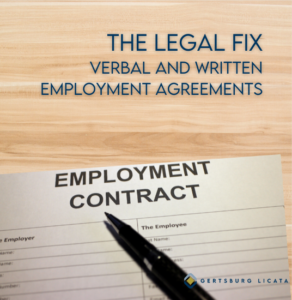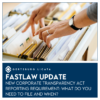THE FOUNDER’S FIX
The F Word
When you dig into most negative emotions, at some point, eventually, you get to the same place: Fear.
It’s always hidden below the surface.
Anxious? You’re probably afraid of something bad happening in the future.
Lonely? You’re probably afraid that someone doesn’t like you, or that no one does.
Angry? Resentful? You may be afraid that some ugly event will reoccur, or that someone thinks they’re better than you, or that someone is taking advantage of you.
Embarrassed? Ashamed? You could be afraid that people think you’re an idiot, because of whatever you’re embarrassed about.
For me, incredible clarity comes from personal excavation until I get to the Fear. To get there, I ask these questions:
1. What exactly am I afraid of?
2. How important is that thing/event?
3. Who’s going to really care, and for how long?
4. How likely is the thing I’m afraid of to actually happen?
5. If it happens, how reversible is it?
Writing out the answer goes a long way, too. (A daily journal practice is a great warehouse for that.)
In most cases, you find the things you’re worried about are totally reversible, and that the Fear was totally unjustified. Just think about all those failures you thought would knock you out completely, but which are now in the rear-view mirror and were really blessings in disguise.
To help take your thinking even further on that point, check out this article from Inc. called Why Emotionally Intelligent People Embrace the 2-Way-Door Rule to Make Better and Faster Decisions.
-Alex Gertsburg, Esq.
THE LEGAL FIX
What You Need to Know About Verbal vs. Written Agreements
Your employees are crucial to your business’s success, and when you add a new member to your team, you need to clearly establish the terms of their employment (including their status as “at-will employees”, if that is their status, and it usually is). This protects your best interest as their employer and potentially avoids disruption later from he said / she said issues.
Ohio employers need to therefore carefully consider the type of employment agreement they use and its legal implications. In this week’s Legal Fix, we’ll review two primary types of contracts used: verbal and written. We’ll also share some best practices to consider as you enter into a work agreement with your new team member.
Check out the full details here and contact us directly with any questions.
THE DEAL FIX
Our Latest Engagements
Gertsburg Licata currently has buy-side engagements (i.e. we are searching for sellers) in the following industries:
- Real Estate
- Real Estate Property Management
- Real Estate Brokerage
- CPAs and Accounting Firms
- Franchise Auto Dealerships
- Used Auto Dealerships
- Manufacturing
- Cybersecurity
- Insurance
- Printing
- Software
- Home Delivery Service
- Home Health Care
- Assisted Living Facility
- Sewer and Plumbing
For additional details on these opportunities, please visit our website. Question? Contact Mike Callam for additional details.
Also, be sure to subscribe to The Deal Fix, our monthly communication about middle-market M&A deals and featured opportunities from Gertsburg Licata.
CEO CONFIDENTIAL
On Weathering the Storm…
This week on CEO Confidential, Alex chats with Dan Charney, President of Direct Recruiters, Inc. In the episode, Dan shares his journey through his professional career, the turning points in developing his business, and how he believes growing up in Cleveland has impacted his successes.
Listen now or download for later.

Alex is seeking the stories of the moments that have challenged and shaped the entrepreneurial journey of CEOs and founders from NEO and beyond. If there is a business leader you’d like to hear from, let us know and we’ll invite them to share their story.
THE RANDOM FIX
Engineering the Perfect Runner’s High
On a good day, I run at about 175 steps per minute. I made my runs a lot more fun by listening to my favorite loud music that’s also 175 beats per minute (“BPM”) to match my pace. A lot more fun. (The military figured this out a long time ago, which is why they sing to a cadence that matches their running or marching pace). Here’s how I found the optimal running pace (i.e. steps per minute, or SPM) and BPM:
1. Find a song you like that matches your running pace and gets you energized. Just take a run with it. Go with the song that puts the biggest smile on your face.
2. Use an app to figure out its BPM. (Type “BPM” or “metronome” into your app search to find the right app).
3. Search Google or YouTube for songs with that same BPM number, and then put those songs on your playlist.
Pro Tip: If you’re a Spotify junkie like I am with a million songs that you’ve “liked” over the years, you can use apps like Sort Your Music or Organize Your Music or Songdata to sort songs by BPM and then re-save them as a new playlist.
You can also skip Step 1 and go straight to Step 2, but I find that reverse-engineering your running pace from a great running song you love makes it much more fun.
Happy running! -Alex



